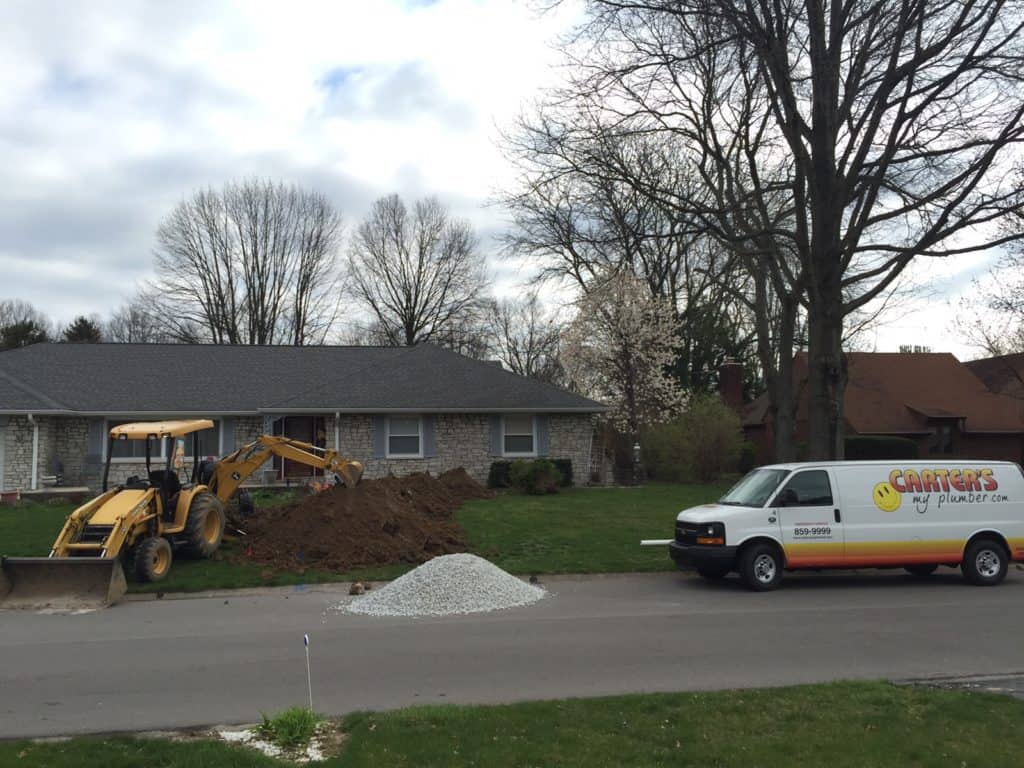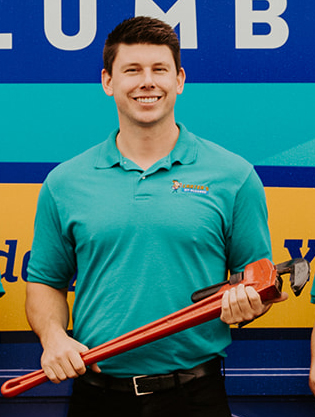Table of Contents
Your sewer line is an important part of your household plumbing system, carrying waste away from your home where it can be properly disposed of. Like any other part of your plumbing system, sewer lines can eventually break down, usually due to simple wear and tear. Needless to say, this can be disruptive to the waste management process in your household, making sewer line repair an urgent priority.
The sheer complexity of sewer line replacements means that most homeowners choose to hire a professional plumber. However, there is an option to tackle the project on a DIY basis. Here are a few guidelines from Carter’s My Plumber, a leading provider of sewer line repair in Indianapolis.

How Do You Know When You Need Sewer Line Repair?
First and foremost, it’s important that you know how to identify the problem. Here are a few telltale signs of sewer line issues on your property.
- You have rodents or bugs getting into the house through a ruptured sewer line.
- Your water bill is suddenly much higher than usual.
- Your landscaping is suddenly married with notable wet patches.
- You have foul-smelling standing water in your yard.
- Your drains are making unusual gurgling noises.
If you are unsure whether or not you have a sewer line problem, or are not sure exactly where the problem is located, you may wish to call a professional plumber, who can conduct a scan to determine exactly where your sewer pipe is damaged. Again, Carter’s My Plumber is pleased to offer inspections, along with trenchless sewer line repair in the Indianapolis area.
Methods for Addressing Sewer Line Damage
Depending on the specific situation and the level of extensive damage you have, there are a handful of solutions that might be appropriate. Consider three of the main options for fixing a broken sewer:
- Pipe Lining (Cured-in-Place Pipe or CIPP). With this method, a new pipe liner is inserted into the existing damaged pipe, then inflated. Once it has time to cure, it becomes a seamless, jointless pipe fitted neatly inside the old one.
- Pipe Bursting. This approach involves a new pipe being pulled through the old broken pipe, essentially ripping apart the old pipe as it goes.
- The Trench Method. While these trenchless options are usually ideal, some situations may call for the old pipe being dug up and then a brand new sewer replacement being added.
Additional Tips for Sewer Line Repair
As you think about different solutions and technologies for sewer line repair, there are a few guidelines to keep in mind.
- First, remember that any project involving an excavation is going to involve some site preparation. This might involve obtaining the necessary permits from your municipal authority. Note that with trenchless methods like pipe lining or bursting, minimal excavation is needed. For the more traditional methods, digging is required to expose the damaged pipe, then create room for replacement.
- Once the repair work is completed, it is important to verify that the new or rehabilitated line works the way it is supposed to. Specifically, you will need to either run water through the system or even use cameras to inspect the work. Licensed plumbers will typically do both.
- After the repair is confirmed to be successful, any trench that you’ve dug may be backfilled and the site restored to its original condition.
Frequently Asked Questions
How do you repair a broken sewage pipe and an underground drain pipe?
To repair a broken sewer pipe, we would have to use locating technology to find the break and excavate down to it. Then we would determine the type of pipe and make the repair with proper fittings to code.
How do you repair a crack in a sewer line?
The only approved way to repair a crack in a line is to reline it with special relining equipment. Otherwise, it needs to be cut out and replaced with new piping.
What happens if your sewer line breaks?
A broke sewer line can cause a major back up of sewage into your home.
How serious is a cracked sewer pipe?
It can be very serious and could cause bigger problems down the road.
How do you plug an old sewer pipe?
You could plug an old sewer pipe with an approved cap. We don’t recommend stuffing anything in the pipe to plug it.
How do you fix a broken pipe without replacing it?
If a line is broken, the only way to fix it 100% would be to excavate it and install something new.
How long does it take to fix a cracked sewer pipe?
Really that depends on how deep and what’s in the way of the work. Usually, it takes anywhere from six to 24 hours.
What is the cheapest way to replace the sewer line?
There is no cheap way to do this type of job. What’s important is to ensure that things are done to code and that they will last.



